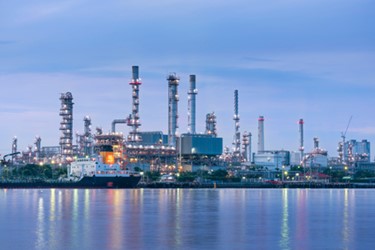Water Scarcity Is A Challenge For Texas, Rushing Ahead Of The Science Could Scuttle Solutions
By Nichole Saunders

Water scarcity is a challenge facing many Texas communities, and it’s encouraging to see how many state leaders are proactively exploring solutions to our growing water needs. This has brought the oil and gas industry and the massive volumes of water it uses and produces each year into the conversation.
One positive opportunity area exists within the state’s oil and gas sector, which uses large amounts of water to hydraulically fracture, or frack, wells. Operators have begun to reduce their reliance on fresh water by “recycling” wastewater within the oilfield to meet their operational needs – an effort that should be expanded as much as possible to take pressure off fresh resources.
However, serious problems arise when we start to look outside the oilfield and consider oil and gas produced water as a potential “future water supply” beyond industry operations – a topic the Texas legislature is currently considering.
At a basic level, we don’t know enough about the water itself or the consequences of expanded use.
There are significant science, data and regulatory gaps related to produced water. Ignoring them could have real implications for Texas landowners, communities and industry.
EDF has studied these gaps extensively over the years. Here are three illustrative conclusions from a recent peer-reviewed analysis we published. Of nearly 1,200 chemicals that have been detected nationally in produced water to-date:
- More than 50% have not been studied – at all – for safety or toxicity;
- About 86% lack the data needed to complete a risk assessment; and
- Less than 25% have standard methods to detect or quantify them in water.
With these challenges in mind, there are some key questions we need to ask.
How can we define in the near term what it might mean to make produced water “clean enough” for new uses?
How can we know with confidence that treatment systems and permitting programs will appropriately address chemicals of concern and protect Texas’ waters, lands and communities?
The short answer is that this simply cannot be done correctly without more research.
For example, existing water quality standards, irrigation standards, and drinking water standards simply weren’t written to cover many of the chemicals that we know (and don’t know) about in oil and gas wastewater – and we need to know more to update them appropriately. So, before we incentivize reuse or discharge programs that could put our existing water resources at risk, serious work should be done to get the science – and eventually the regulatory parameters – right.
Rushing ahead to promote broader use of oil and gas wastewater as a resource before we do so could risk doing more harm than good.
This blog was adapted from testimony delivered to the Texas Legislature’s Natural Resources and Economic Development & Water and Rural Affairs Committees in January of 2020. Full remarks available here.
From Environmental Defense Fund's Texas Clean Air Matters Blog.
